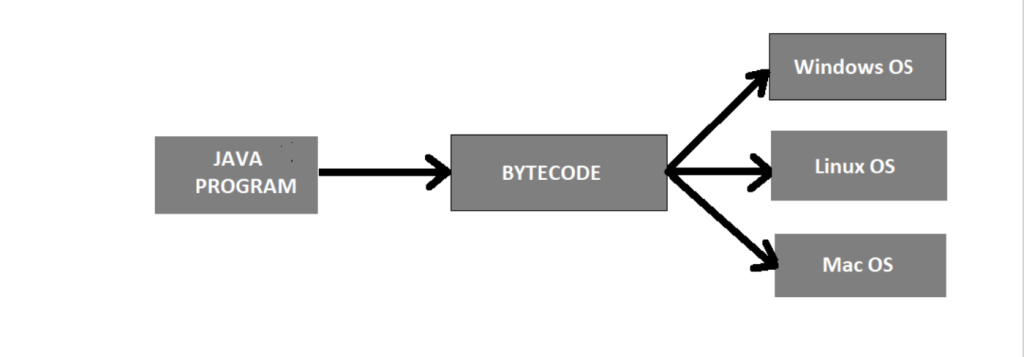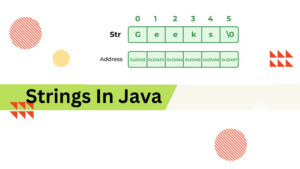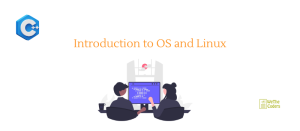Introduction to java
Java is the most popular programming language, which was created in 1995 by James Gosling at Sun Microsystems.
Initially, java was called Oak, Since Oak was already a registered company, so James Gosling and his team changed the name from Oak to Java.
Java programming language is also called high-level programming language mean its code syntax is more readable and understandable to a human.
If you’re new to Java, our Do My Java Homework Help and Java Homework Help give full support to boost your grades and knowledge.

Feature of Java
(1)Simple
Java is often regarded as a relatively simple and beginner-friendly programming language, especially when compared to lower-level languages like C++ or assembly language. It was designed with a focus on readability, ease of use, and platform independence.
(2)OOP (Object Oriented Programming) language
Java is 99.9% an Object-Oriented Programming language, which means in Java everything is written in terms of classes and objects.
What is Class?
A class is defined as a blueprint or template in Java which is used to create an object. We can create multiple objects from a single class.
What is Object?
The object is nothing but a real-world entity that can represent any person, place, or thing. Every object has some state and behavior associated with it. Following are some basic concepts of OOPs.
- Class
- Object
- Inheritance
- Polymorphism
- Abstraction
- Encapsulation
(3)Platform Independent
Java is platform independent programming language what does its means that you can write code once, and run it anywhere.
Suppose a programmer writes a program on Window OS and builds the program and gets an executable jar file from the program now if he wants to run this executable jar file on any other OS Platform like Linux or Mac then it will run, he does not need to deploy code on Linux or Mac OS and then recompile the code for that particular OS like he does in case if he is using C, C++.
On compilation, the Java program is compiled into bytecode. This bytecode is platform-independent and can be run on any machine, plus this bytecode format also provides security. Any machine with Java Runtime Environment can run Java Programs.

(4)Secure
Java is often considered a secure programming language due to a combination of its design principles, features, and runtime environment. Here are some reasons why Java is perceived as a secure programming language:
a) Bytecode Compilation:
Java source code is compiled into bytecode, an intermediate form that is executed by the Java Virtual Machine (JVM). This bytecode is platform-independent and provides a layer of abstraction between the code and the underlying system, reducing the risk of direct system vulnerabilities.
b) Memory Management:
Java manages memory allocation and deallocation automatically through its garbage collection mechanism. This helps prevent common memory-related vulnerabilities like buffer overflows and memory leaks.
c) Classloader:
Java’s class loading mechanism ensures that only trusted and verified classes are loaded into the JVM. This prevents unauthorized code from being executed and mitigates risks associated with malicious code injection.
d) Exception Handling:
Java’s exception-handling mechanism helps prevent crashes by allowing developers to handle unexpected situations gracefully. This can reduce the risk of exposing sensitive information or causing security vulnerabilities due to unexpected errors.
e) Standard Libraries:
Java provides a comprehensive set of standard libraries for common programming tasks, such as input/output operations, cryptography, and network communication. These libraries are designed and maintained with security in mind, reducing the likelihood of vulnerabilities in common programming tasks.
f) Security APIs:
Java offers built-in security APIs for cryptography, secure communication (SSL/TLS), authentication, and access control. These APIs make it easier for developers to implement security features correctly.
(5)Secure
Java is also called a multi-Threading programming language means a single program can execute many tasks at the same time. The main benefit of multithreading is to utilizes memory and other resources to execute multiple threads at the same time, like while you are typing on MS Word grammatical errors are checked along is the example of the multi-thread program.
(6)Robust
Java is a Robust programming language because Java puts a lot of emphasis on early checking for possible errors, as Java compilers are able to detect many problems that would first show up during execution time in other languages. Java has a strong memory allocation and automatic garbage collection mechanism. It provides a powerful exception-handling and type-checking mechanism as compared to other programming languages. The compiler checks the program whether there is any error and the interpreter checks any run time error and makes the system secure from the crash. All of the above features make the Java language robust.
(7)Distributed
Java is often used for developing distributed applications. Distributed computing refers to the use of multiple computers or nodes connected via a network to work together on a task. Java provides several features and libraries that make it well-suited for building distributed systems.
Types of Application which can develop in Java Programming Language
Java is a versatile programming language that can be used to develop a wide range of applications, from simple command-line tools to complex enterprise-level systems. Here are some types of applications that can be developed using Java:
- Web Applications
- Desktop Applications
- Mobile Applications
- Enterprise Applications
- Distributed Systems Applications
- Embedded Systems Applications
- Game Developments
- Web API’s
- Financial Applications
- Educational Applications
Most Asked Question On "Introduction to java"
Java is the most popular programming language, which was created in 1995 by James Gosling at Sun Microsystems.
Java programming language is also called high-level programming language mean its code syntax is more readable and understandable to a human.
Java is a versatile programming language that can be used to develop a wide range of applications, from simple command-line tools to complex enterprise-level systems. Here are some types of applications that can be developed using Java:
- Web Applications
- Desktop Applications
- Mobile Applications
- Enterprise Applications
- Distributed Systems Applications
- Embedded Systems Applications
- Game Developments
- Web API’s
- Financial Applications
- Educational Applications
- Install Java Development Kit (JDK)
- Set Up Environment Variables
- Choose an IDE (Integrated Development Environment)
- Configure IDE
A variable can be thought of as a memory location that can hold values of a specific type.Variables allow you to give a meaningful name to a value, making it easier to refer to and work with that value throughout your code.
and A data type show the kind of values that a variable can hold. Java has two main categories of data types: primitive data types and reference data types.
- Install Java Development Kit (JDK)
- Set Up Your Development Environment
- Write Your Java Code
- Save Your Java File
- Compile the Java Program
- Run the Java Program:
OOP stands for Object-Oriented Programming. Procedural programming, Java is fully object Oriented language and it is about writing procedures or methods that perform operations on the data, while object-oriented programming is about creating objects that contain both data and methods.
The Imporent diffrence is JDK is for development purpose whereas JRE is for running the java programs. JDK and JRE both contains JVM so that we can run our java program. JVM is the heart of java programming language and provides platform independence.
Suppose a programmer writes a program on Window OS and builds the program and gets an executable jar file from the program now if he wants to run this executable jar file on any other OS Platform like Linux or Mac then it will run, he does not need to deploy code on Linux or Mac OS and then recompile the code for that particular OS like he does in case if he is using C, C++.






